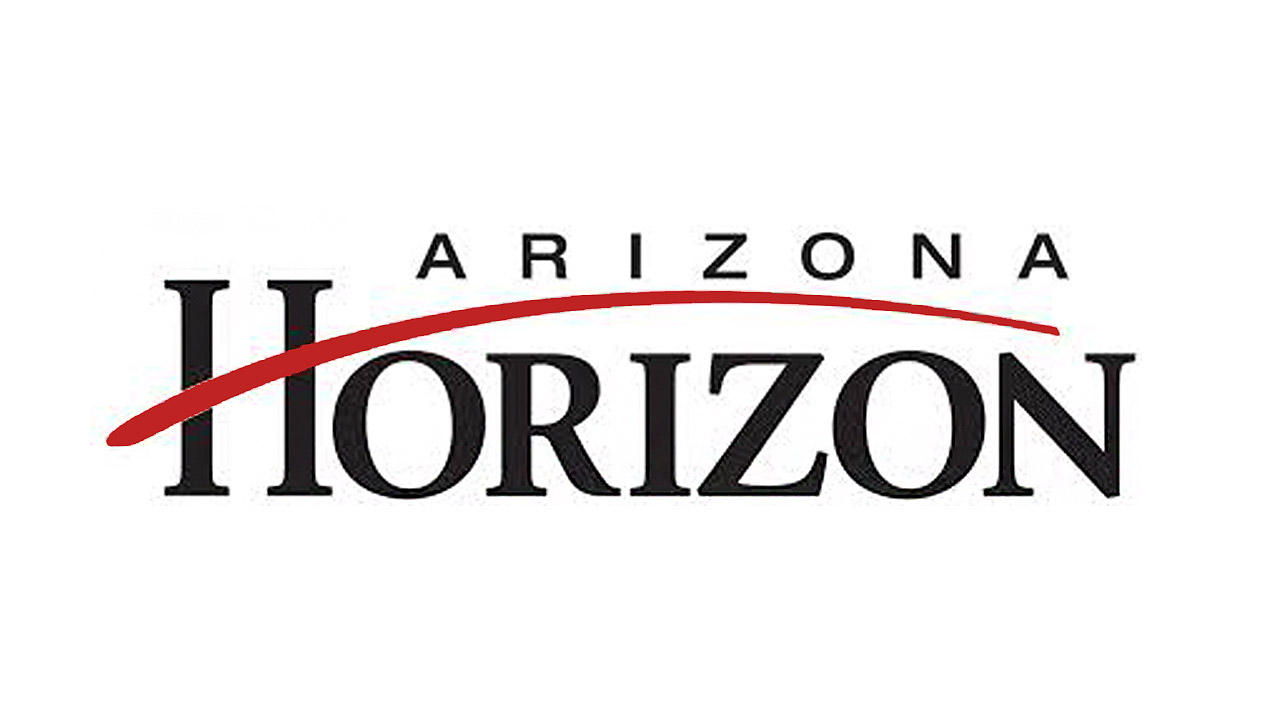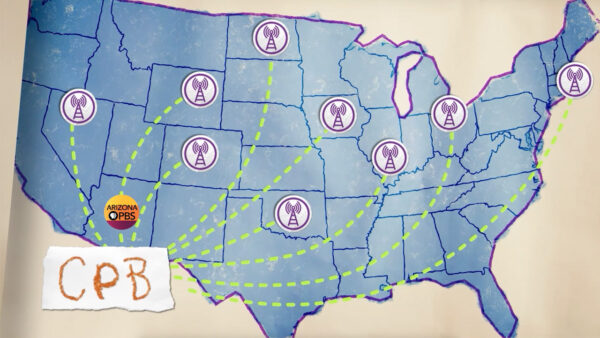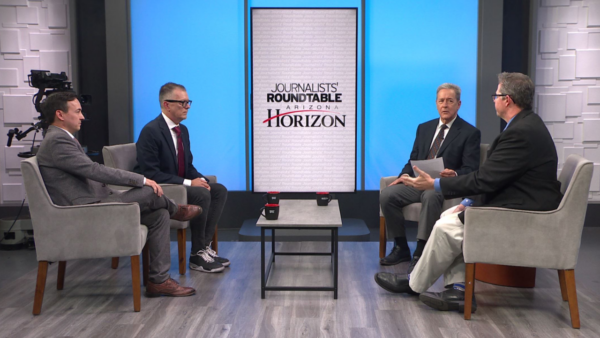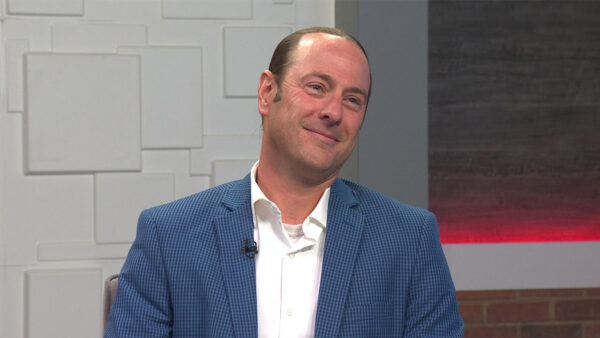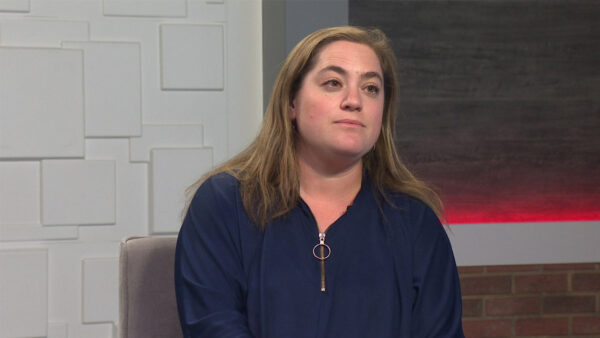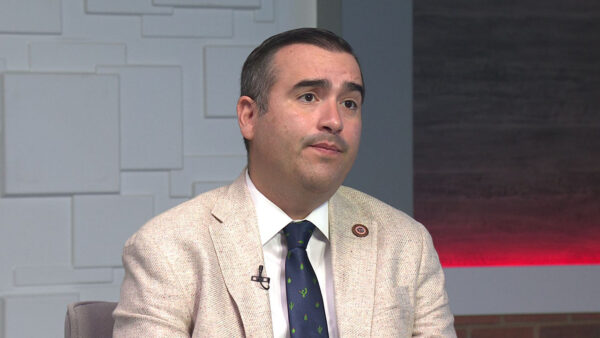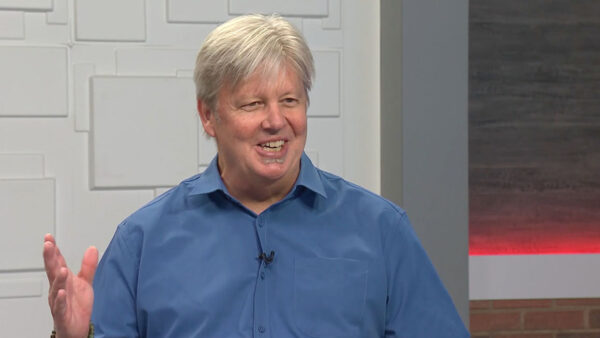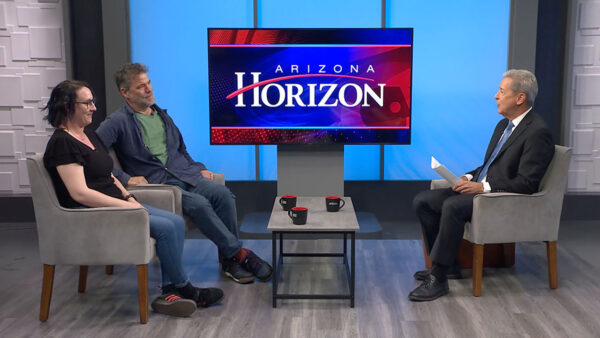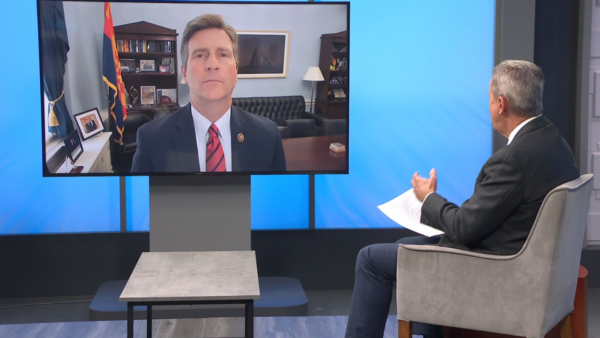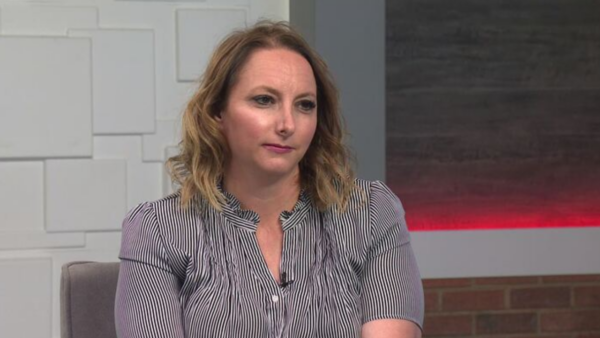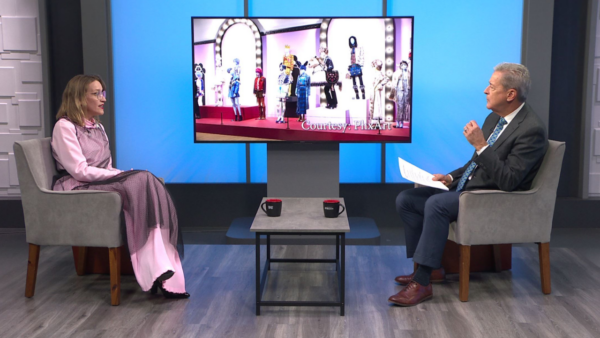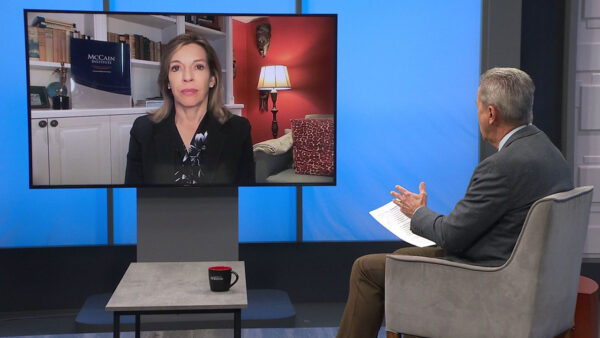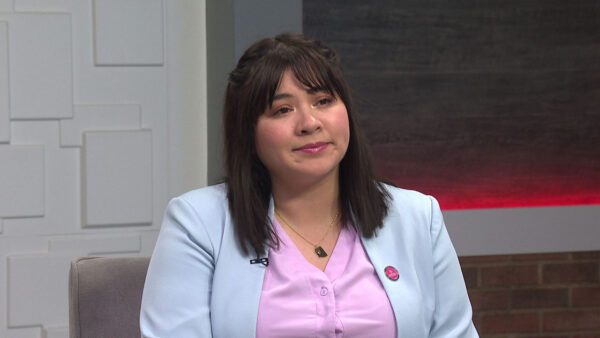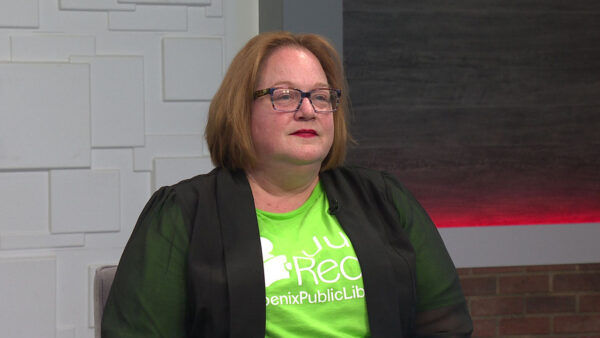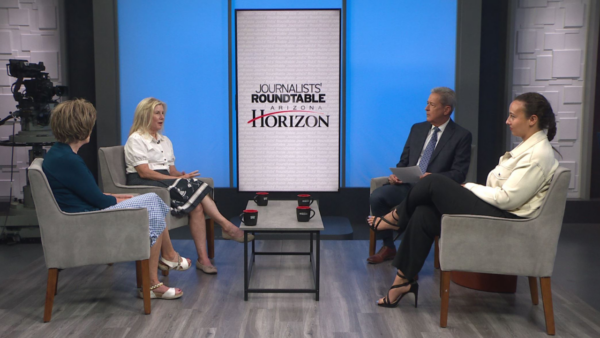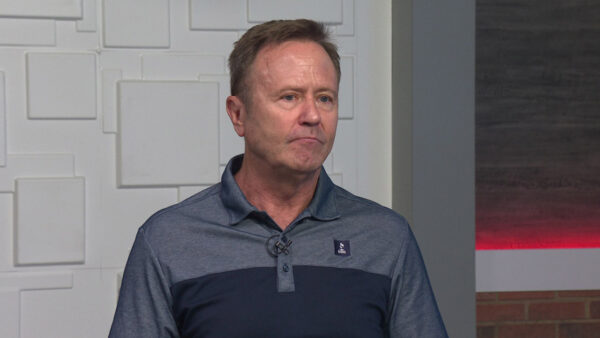Arizona’s congressional district map has been upheld by a state appellate court, but the same court ordered a trial judge to reconsider whether Arizona’s legislative district map is constitutional. Howard Fischer of Capitol Media Services will explain the ruling and what’s next for the maps.
>> Michael Grant:
Tonight on "Horizon," a state appellate court rules against Democrats and Hispanics in regard to Arizona's legislative maps. A conversation with author Marc Gopin on the possibilities of finding peace in a region of conflict. And a look at the growth of the Hispanic market in Arizona.
>> Announcer:
"Horizon" is made possible by the friends of Channel 8, members who provide financial support to this Arizona PBS station. Thank you!
>> Michael Grant:
Good evening. Welcome to "Horizon." I'm Michael Grant. Democrats and Hispanic groups in our state sued over legislative maps drawn by the state's independent redistricting commission claiming the commission did not pay enough attention to creating competitive legislative districts. Yesterday state Court of Appeals overturned a lower court ruling. The lower court had found the commission had failed to create politically competitive districts. What does that mean for the state legislature and the bills it approves? Here to explain that and the ruling is Howie Fischer of Capitol Media Services. Why don't we start with that last one first, Howie. What's the legislative impact of this, assuming it stands?
>> Howard Fischer:
Well, it means that, at least through next election and probably through the 2010 election when we do redistricting again, the legislature will remain firmly in Republican hands. Republicans have only about a 6% voter registration margin in this state but the way the districts are crafted, there are not that many competitive districts. There are some safe democratic districts in downtown Phoenix, downtown Tucson, some rural democratic districts, but most of the rest of them are heavily Republican. In other words, there are such margins there if people simply vote with their party there is no chance a Democrat could get elected.
>> Michael Grant:
And, in fact, the spread here, if I recall correctly, I want to say that the redistricting commission's maps had come up with maybe four or so arguably competitive districts, and even applying the different set of rules the Superior Court had imposed, you were still moving to maybe only seven or 8 competitive districts.
>> Howard Fischer:
Exactly but the difference is the Senate. The house has not been in Democratic hands, I think, since the 1960s. 39-21 with the defection of Cheryl Chase last week. The Senate has always been a little closer. Right now it's 18-12 but you remember the Democrats actually controlled it briefly after the Mecham impeachment and in fact several years ago it was 15-15.
>> Michael Grant:
Which was fun.
>> Howard Fischer:
And so the other piece of this, however, is it's not just a question of 16-14 or who controls. The question is veto proof. In other words, if you get to a point where you have 20 Republican senators and 40 Republican house members, it doesn't matter to them who is on the 9th floor because they can say, gee, the governor vetoed this, you know, we've got the votes to override here and that's what the Republicans are really shooting for.
>> Michael Grant:
Let's head for the Court of Appeals and try to give people some understanding of what the court ruled. Part of the ruling turned on the word "should."
>> Howard Fischer:
Yes, and it's very Jimmy Carter-like. You know, what "should" is. When voters approved redistricting in 2000 and took the job away from the legislature, they set out a variety of things the commission has to take into account. Number one, it has to comply with the voting rights act. Which is very clear. That's federal law. It also means you can't dilute minority voting strength, Hispanic and Native American. You have to have districts of comparable population size. Communities of interest. You shouldn't have a district that runs from Douglas perhaps to Yuma. Respect geographic boundaries. The very last thing in that list, it says that the commission should, when practicable, create politically competitive districts to the extent it will not harm the other factors there. Now, Judge Fields, who heard the challenge after the commission came up with this current map said that, in fact, the commission had not really done the job, that really competitive districts are co-equal with all of the other goals. He used some legal standards of strict scrutiny, voting rights. What the Court of Appeals said is, well, he didn't use the correct legal standard but even beside that, that the very wording of the should to the extent practicable when it will harm nothing else means this is sub servant. In other words, after you are done with everything else only then do you go back and take a look.
>> Michael Grant:
I would state it this way, Howie and see if I'm accurate. What Judge Fields said is listen, at every one of these benchmarks along the line, you should have, you should, have been taking into account, can we comply with the voting rights act and also get a competitive district? The redistricting commission, instead, had really moved through all of that list and then right at the very end of the process taken into account competitive aspects and the Court of Appeals said, yeah, it's okay.
>> Howard Fischer:
Yes, exactly. And the question now becomes, because the Democrats and Hispanics are going to appeal to the state Supreme Court, their contention even assuming you accept the court of appeals' argument that this is the last factor, they believe that the commission could have created more competitive districts without harming the rest of them. Now, we're down to words. Is could have the same as should have? That becomes those things that drive the public crazy but that the lawyers love because what the Court of Appeals seemed to say is even perhaps if they could have, we're not going to substitute our judgment for the judgment of the commission, and so that will be what goes before the Supreme Court. It will take them a couple of months to figure out whether they even want to accept jurisdiction and hear arguments on it. If not, it then goes back to judge fields to rehear it using the new rules from the Court of Appeals about what he should consider and what he shouldn't.
>> Michael Grant:
Bottom line here being just from a pure timing standpoint, particularly if they go to the Supreme Court, and they have indicated that they will, these legislative maps going to be in place for the 2006 election cycle?
>> Howard Fischer:
You would need to have a totally different court ruling by March, April at the latest, because if you're going to redraw the maps and then have to send them to the Department of Justice and do all that stuff there's no way to do it in time for the September primary much past about the March or April of next year. So pretty much '06 elections run that way. That leaves '08 and '10. Then we go through the redistricting process again and you and I sit around the table five years into that and decide what the courts are arguing over that.
>> Michael Grant:
It is interesting, this was supposed to, I think, to a certain extent, it was supposed to take politics out of the process, maybe streamline it a little bit and here it is 2005 and we're still trying to figure it out.
>> Howard Fischer:
And you'll never get politics out of the process. It's like clean elections, you move it from one venue to another.
>> Michael Grant:
Howie Fischer, Capitol Media Services, as always we appreciate it. In the Middle East the constant threat and actuality of violence makes peace-building efforts difficult. Marc Gopin has written three books outlining the obstacles we face when trying to understand conflict and promoting peace. He is a professor at George Mason University. He lectured at ASU recently for the center for the study of religion and conflict. Larry Lemmons spoke with him last week.
>> Larry Lemmons:
How central is the Israeli-Palestinian issue in terms of peace in the Middle East generally?
>> Marc Gopin:
It's very important in the minds of millions of people who are Arab and Muslim, hundreds of millions of people. Is it an excuse that terrorist use to continue the terrorist campaigns like the president said? Absolutely. Is it utilized as a rhetoric to cover up corrupt regimes that don't want to change in the Middle East? Absolutely. That doesn't mean it's not true. That doesn't mean that the grievances aren't legitimate. The fact is that most people who are aggrieved and angry don't quite know the complexity and the difficulty of what an Israeli posture might be, and what legitimate grievances the Israelis have against the Arab support for Hamas, for the most vial forms of terrorism and so on. So there's a give and take that needs to take place. And the United States could be and should be in a better position to help each side understand the deepest grievances. Now, they have tended to do that on an elite level behind closed doors. Particularly when they had an Israeli prime minister that was willing to engage in that give and take and Prime Minister Rabin, perhaps, but they really haven't done that in any public way. They really need to more about people understanding the daily lives of Palestinians but also understanding the daily lives of Israelis. Certainly Israelis are in a better economic condition. But in many ways much more vulnerable to being blown up by an army of people supported by money from around the Arab and Muslim world that says, corruptly, that suicide bombing is a positive deed inis Islam.
>> Larry Lemmons:
Do you think it was helpful to use the word "crusade"? I know the president himself used that word and he was criticized for it. Do you think using words like that exacerbates the problem?
>> Marc Gopin:
I think what exacerbates the problem is the continuing reference to a black and white approach to conflict. When there are people in the world who are criminal, who use and abuse religion or ideology or culture for fascist purposes, the most important thing they're doing is being criminals, and we have something called the rule of law, we have something called national social contracts and global social contracts that are designed to keep law and order and designed to create peace between people who have disagreements. When you shift into rhetoric of, "they hate us because we love peace, we are with God, they are against God," you basically divide the world in convenient psychological ways and simplistic ways good for politics but very destructive in terms of solutions. There is only one speech that I remember that Condoleeza Rice gave where she said for 50, 60 years we've made a mistake in terms of who we've supported and how we've supported things in the Middle East. But it really has to go further than that. If the whole religion of Islam has been intimidated and hijacked by extremists interpretations of their religion if it's well funded and a highly criminal element to that, at least acknowledge that the United States was a part of the process of empowering those people in fighting in Afghanistan and that set this in motion for geopolitical purposes based on the previous war, namely the Cold War. Most wars set in motion the next wars. So taking responsibility, being honest about that, instead of creating a universe of black versus white, of white versus black, is usually a prescription for multi-laterallism cooperation even with people who disagree with you or who have conflicting interests. And that is missing from the imagery and the kind of rhetoric coming out of the president's advisors.
>> Larry Lemmons:
Of course, that kind of rhetoric has been with us forever, even since before the Cold War, leaders tend to characterize the enemy in black and white ways.
>> Marc Gopin:
Uh-huh.
>> Larry Lemmons:
How can someone look at the very specifics, geopolitically, and on the one hand accomplish our national goals, whatever they may be, but on the other hand promote peace in an area?
>> Marc Gopin:
Well, there are two things:
First of all, there's a difference between campaign rhetoric and presidential rhetoric. One of the greatest dangers in American life is when campaign rhetoric becomes presidential rhetoric. It's one thing to engage in the kind of crass competition for people's hearts and minds that gets you votes or to make people scared, and the truth is the Democrats and Republicans alike have done this, you know, in history, John Kennedy did it as well, and certainly Richard Nixon and others did this, and it's a different thing to lead that way. Because the more that you lead that way, you don't give people a vision of a positive constructive reality. All you give them is war. And that's a dangerous construct. It doesn't allow anyplace to build alliances and coalitions. Secondly, I believe that it is right and good to stand for democratization and human rights around the world however I am convinced that doing it through threats and punishment and no system of give and take, no ability to empathize and understand where a regime might be guarantees that it's going to end up in military approaches to things. Only military approaches to things. And it's a distortion even of the military -- even of the military tradition. There's a lot of honorable people who are part of the military forces who will tell you that the use of force is very blunt and it's the last resort. There's a tendency of a political orientation towards difficult states and difficult problems to only use threats. I've worked a lot within the Syrian situation, and I've done a lot with the Syrian people, and I can tell you that if there was only in place now a serious offer of incentives and disincentives, there are people who would break ranks and ally themselves with the more constructive approach to Middle East, more constructive approach to Lebanon, to Israel, to all -- the issue of terrorism. There is just as much of a fear on the part of a number of people in leadership of terrorists and religious extremists in Syria as anywhere else, and yet there is no process here of really creating a clear system of incentives and disincentives to this very tough regime, this very difficult, corrupt place -- place of corruption that could change for the better if there was -- corruption that could change for the better if there was a president and presidential advisors who are offering a way out. It was the same with Arafat, very difficult man, very corrupt man, and at the same time, there was not enough, and there needs to be more of a notion that you must honor your enemies even when you disagree with them. You must honor them and give them a way out. There was an ancient law in the Bible that you could not attack a city from four sides. You had to only attack it from three sides, because you had to give people an option of suing for peace, and when you don't, when all you're doing is punishing, then -- or threatening or humiliating, then the only option is to fight back.
>> Larry Lemmons:
You say that we as individuals can do things to promote peace in the world. What are some of those things?
>> Marc Gopin:
I think one of the things that people need to do is to study and know all the facts of particular conflicts and get their source of information from many people and from many news outlets and it's particularly gaining the perspective of all sides in a conflict, and that the second thing is that with that knowledge to work on their own skills and their own personality traits so that they can be self-examining, they can be listening, they can acknowledge and take responsibility when they or their community have done something wrong, and at the same time, find the right words to be able to convey to people what the other side is going through.
>> Larry Lemmons:
Thank you very much, Mr. Gopin, for speaking with us.
>> Marc Gopin:
You're welcome.
>> Michael Grant:
The Arizona Hispanic Chamber of Commerce and SRP have released DATOS-2005, the focus is on Arizona's Hispanic market and its decade of growth. Earlier on "Horizonte," Jose Cardenas spoke with the president of the Hispanic Chamber of Commerce, Harry Gerwalt, but first Nadine Arroyo has highlights of this year's study.
>> Nadine Arroyo:
The Arizona Hispanic Chamber of Commerce has released this year's DATOS, the information guide that offers a window to Arizona's Hispanic market, from consumer preferences to business ownership and outreach. According to DATOS Hispanics are indeed the fastest growing minority group in Arizona. Hispanic students are the largest and fastest growing group in grades K-12 and Hispanics have the highest birth rate in Arizona among all groups. According to DATOS, over the past decade Hispanics' purchasing power in Arizona rose from $8 billion to $21 billion. And in the U.S., Hispanics spend more than $5 billion shopping online annually. And DATOS adds that of all new home buyers in the next ten years, 40% will be ethnic and immigrant with Latinos doubling their numbers in just 20 years. This year's DATOS makes one thing very clear, the Hispanic population in Arizona is growing significantly, as well as their impact on our state's economy and community development.
>> Jose Cardenas:
Joining us tonight to talk more about DATOS 2005 is president and CEO for the Arizona Hispanic Chamber of Commerce, Harry Gerwalt. Harry, welcome to Horizonte. A different looking DATOS than in the past and a lot of information. We want to talk about that. But first, just a thumbnail sketch of the chamber itself that's responsible for putting together this report.
>> Harry Gerwalt:
Well, the Arizona Hispanic Chamber of Commerce has been in existence for 57 years. So we've been around for a long time we are currently statewide. We have just recently brought on three new board members, one from Nogales, one from Flagstaff, and one from Prescott. So we're truly a statewide agency today. The organization has around 600 members on our rolls right now and we also operate Arizona minority business development center that provides technical assistance to minority business enterprises that are at $500,000 in gross revenues and above.
>> Jose Cardenas:
Certainly one of the things that the chamber has been known for the last decade is DATOS, the annual report. Tell us a little about the chamber's involvement in DATOS and who else participates in this endeavor.
>> Harry Gerwalt:
DATOS was actually put together about 10 years ago because the business community kept asking does anybody have comprehensive information or demographics on the Hispanic community and no one really had them. So the chamber was starting about 10 years ago in '94, under Sandy when she was in this position as president, to start compiling that data. The way we compile it is that we actually contract with the W.P. Carey School of Business at Arizona State University under the leadership of Dr. Louie Olivos and his graduate students that we commission in January to start collecting this data, and then by May they have all of this data put together, and the committee sits down, we take a look at it -- for example, this year we had 170 data points that we wanted to look at and review. And we paired it down to about 50 data points which is in the book. The real significant difference in this book this year is that we've taken that data and now have put content next to it. So it makes it a little easier for people to be able to read the charts.
>> Jose Cardenas:
Let's talk a little bit about what, what's the purpose, what's the goal of DATOS, which, of course, means data in Spanish.
>> Harry Gerwalt:
It's really to provide that data, the latest demographic information on the Hispanic community primarily to the business community.
>> Jose Cardenas:
And not just the Hispanic business community, we're talking the business community at large.
>> Harry Gerwalt:
The general business community. Because the question has always been asked, how can we market and what do Hispanics buy? How much buying power do they have? Where are they located? Those kind of questions. So this is very helpful for anyone who is looking to do business in the Hispanic community.
>> Jose Cardenas:
SRP sponsored the conference at which the DATOS was unveiled and also released their own report on Hispanic businesses. What are the basic differences between DATOS that just came out and the one that was just released by SRP?
>> Harry Gerwalt:
The biggest difference is the SRP study is a profile on Hispanic businesses throughout the State of Arizona. So for the first time in the history of the state, there has been a compilation of information that helps you to understand what does it Hispanic business look like? That's what SRP studied. Our Datos is really an accumulation of the data in regards to population, fertility rate, household ownership, that kind of information shipship.
>> Jose Cardenas:
Focus more on the consumer.
>> Harry Gerwalt:
On the consumer so businesses can look at and try to develop their marketing strategies to go in and market to the general Hispanic population.
>> Jose Cardenas:
We recently had Max Gonzalez and Dr. Olivos, who participated in the study, on to talk about the study. One of the things that surprised them was that the Pima County versus Maricopa County there were actually some suggestions. That it's more affluent Hispanic businesses in Pima County versus Maricopa County and that surprised them a little bit. Do you see the same thing in terms of the consumer base, Hispanic consumer base in those two counties?
>> Harry Gerwalt:
I think it goes to the number of folks that are in the Hispanic community in both of those counties. For example, in Maricopa County we have 25% of the population. In Pima County it's 30%. So I think that would probably contribute to that number.
>> Jose Cardenas:
Let's talk about some of the data in DATOS. Birth rates. What did you find there?
>> Harry Gerwalt:
What we found is that Hispanics are the -- have the highest birth rate in the United States. To put it into perspective, 50% of the Latinos are under the age of 25, and 70% of the Latinos are under age of 36. So we're very young community. And the real significance to that is when you look at it from a consumer perspective, since they're that young, there has been a very large increase in the number of computers that are being purchased and the amount of online shopping because these younger Latinos really do -- are and very savvy about --
>> Jose Cardenas:
What about households, Hispanic households.
>> Harry Gerwalt:
55% of the United States Hispanics owned their own homes. In the Phoenix metro, the Hispanic household controlled about $14.9 billion in spending. The average annual household income is around $51,000.
>> Jose Cardenas:
In terms of numbers, though, we've got 1 of every 3 households?
>> Harry Gerwalt:
It is. There's actually nearly 1 in every 3 households in the City of Phoenix and 1 in 5 in the state.
>> Jose Cardenas:
Pima County?
>> Harry Gerwalt:
You know, I don't have that complete breakdown.
>> Jose Cardenas:
Maricopa County would be about, what, 20%.
>> Harry Gerwalt:
20%, and I would say Pima would be closer to 30% just because of the demographics.
>> Jose Cardenas:
Some data on the religious breakdown of the Hispanic consuming population.
>> Harry Gerwalt:
You know, that was kind of an interesting piece because as we were looking at it, what we found was that by 2050 Latinos will account for 85% of the Catholic population in the United States.
>> Jose Cardenas:
Why would DATOS be interested in that? What does that tell you or the audience that you're directing the information to?
>> Harry Gerwalt:
Well, it's helpful to understand where folks gather. Really, their beliefs, what they value, and I think by understanding the religious principles that they're ascribing to you, have a better understanding of how you might want to market to them.
>> Jose Cardenas:
Your keynote speaker was Phil Archer of the ZYMAN group. He made some rather provocative statements at the conference. Tell us about that.
>> Harry Gerwalt:
He did make some provocative statements in regards to the way that marketers are marketing to the Hispanic community. What he basically said was that, you should look at the Hispanic community like you look at any other market. If you're going to do it, you have to go at it 100%. Most of the times what happens is that if you see a population, for example, of 14%, most marketers will put together a budget that says, okay, 14% of our budget is going to go to marketing to Hispanics. The other thing that I thought was very, very good in the presentation was the fact that taking away some of the stereotyping, and by that I mean there was a slide in particular that demonstrated what I think most of us have seen in the past, and that is you see mariachi, you see people sitting around eating guacamole and drinking a Corona. The reality is --
>> Jose Cardenas:
It's a much different population?
>> Harry Gerwalt:
It's a much different population.
>> Jose Cardenas:
Harry, We'll have to leave it at that. Thank you for joining us on "Horizonte".
>> Mike Sauceda:
Arizona state workers are some of the lowest paid government workers not only across the nation but also among governments in our state. Learn what lawmakers are doing to help remedy that situation. Plus work has been under way for the Valley's light rail system and it's having an impact on businesses. Learn more about those topics Thursday at 7:00 on "Horizon."
>> Michael Grant:
Thanks for joining us on a Wednesday. I'm Michael Grant. Have a great one! Good night.
Howard Fischer:Capitol Media Services;Harry Gerwalt:President and CEO, Arizona Hispanic Chamber of Commerce ;
